Tennis
French Open: Alex Corretja in tennisnet interview: “Don’t want Bumm-Bumm to dominate”
Alex Corretja, here in the exclusive tennisnet interview, and Arantxa Sanchez are ambassadors for the Longines Future Tennis Aces invitational tournament, in which the Swiss watch brand Longines is looking for the tennis stars of tomorrow in Paris. Corretja has been in the French Open finals twice, became ATP World Champion in 1998 and climbed to second place in the world rankings. He also won the Davis Cup with the Spanish team.
The Longines youth tournament will be held for the ninth time in 2018, with boys and girls from 20 nations competing together for the trophy for the first time and once in a row, with tournaments for boys and girls taking turns so far. Tournament winners will also receive financial support from Longines up to their 16th birthday. In 2013 Rudi Molleker won the tournament, he has already climbed into the ATP world rankings in the region around world rankings place 300.
He will also be a guest at a Longines gala event in Paris on Saturday evening, attended by Stefanie Graf and Andre Agassi. The couple will also hold the award ceremony on Saturday at the final court, which was built directly under the Eiffel Tower.
Jörg Allmeroth from Paris
tennisnet: Mr. Corretja, you have accompanied the search for talent at Longines Future Tennis Aces for many years. What do you notice this year?
Alex Corretja: Especially the incredible physical constitution of the players. With the boys we have players here in the field, who are already about 1.80 meters tall at the age of twelve and weigh 70 kilos. What will it be like when they’re 17.18? It’s absolutely incredible. We have to be careful in tennis that the game is not too dominated by power and force, that it still allows refinement and elegance. We don’t want Boom Boom to dominate. I am sure that at some point the net will be higher. The game should also offer entertainment, not only serves, rallies with two or three strokes.
tennisnet: Heavy balls were always under discussion?
Corretja: Yes, this has been brought into play again and again in my time. But the clear argument against this is that it leads to more injuries, especially in the shoulder area. Nobody can want that. I think it’s also important to slow down the courts. You have to roughen up the hard courts a bit and take their speed. There should be a balance throughout the year so that everyone feels comfortable, players with a sand preference and those who prefer faster courses. I want big and small players to feel comfortable. It’s nice when a Diego Schwartzman plays well on hard courts. And if a Kevin Anderson or John Isner good on sand. That’s what makes the good mix.
tennisnet: They also talked to parents and coaches of the kids of the Future Tennis Aces competition. What is, in general terms, the advice for a healthy career?
Corretja: It is important to be always ready to learn, to have a lot of patience and tenacity over the long years. Tennis is above all one thing: lifelong learning. And the quality of taking good things out of setbacks. I learned more from my defeats than from my victories. And that’s the way it goes for all the top players. In tennis, you lose in most tournaments, so that’s something you have to deal with.
tennisnet: The tournament takes place on clay courts. They also said that sand courts were the perfect education for a young player.
Corretja: Of course. Here you learn the whole range of tennis, here you have to be patient. Here you still have to play a stroke more and more and more. Sand courts are the most wonderful training facility. I was surprised that even in some cities in large tennis nations there are hardly any sand courts, for example in Western Australia.
tennisnet: Let’s come to the best clay court player of all time, a man who should have a lot of patience – her compatriot Rafael Nadal. Are you surprised how hungry he still is after all these years on the tour?
Corretja: No, not at all. It’s part of the DNA of the greats that they never lose their ambition. Nadal doesn’t go to a tournament just to play well. He wants to win, always and everywhere. And especially in Paris, his second home. His home as a tennis player. Nadal is simply the greatest competitor I have ever met.
tennisnet: Two players challenged Nadal this year: Dominic Thiem and Alexander Zverev. How do you see this duo?
Corretja: We need these young guys who bring life into the joint. Of course I’m happy about Rafa’s victories, but I also know that we need fresh blood. Young players who want to do great things and dare to do great things when it counts. Thiem and Zverev have shown that they are able to do extraordinary things. Thiem is the tough bully. Zverev is also a hard worker, but with a little more fluid tennis. And he has the advantage of scoring one or two free points with his size.
tennisnet: Now Zverev always had the flaw that he wouldn’t get far in the Grand Slams and showed nerves. In Paris, however, he is playing with strong nerves and also manages to free himself from difficult situations.
Corretja: Many people raised their fingers against Lajovic again at the beginning and said: “Look, he’s leaving the tournament early again. And then he pulled himself out of the mess and really fought for his life. This victory was more valuable than the Masters title in Madrid for him, this comeback. It will give him the certainty for other tricky situations: Yeah, I can still make it.
tennisnet: What do you think Zverev can do in the medium to long term?
Corretja: There is no doubt, and that is by no means an exclusive opinion of mine: he will be number 1. And he’s gonna win the Grand Slam title. How early, how late: That’s the only question.


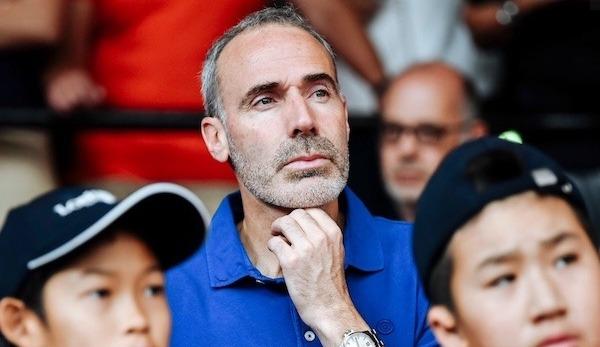



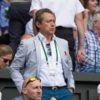

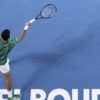

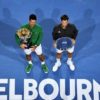

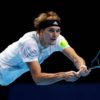
You must be logged in to post a comment Login